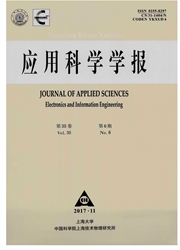

 中文摘要:
中文摘要:
合拢的模拟甚至为象 Trp 笼子一样的微型蛋白质经常对模拟的起始的符合构造费时间或高度敏感。这里,我们在场看起来基于测试对开始的符合构造有效、感觉迟钝的一个多尺度的分子的动力学方法源于 Trp 笼子蛋白质。在这个方法,模仿的系统同时与增长变粗层次在原子和纹理粗糙的粒子上被建模。纹理粗糙的粒子的动力学被使适应好颗粒的粒子的最近的轨道而不是修理并且在以前的纹理粗糙的模型使用了的 parameterized 精力功能。另外,纹理粗糙的粒子的作文被允许在它的历史期间基于连贯自动地被更新。从充分扩大的符合构造和 Trp 笼子蛋白质的另外的几不同符合构造开始,我们的方法成功地至多在内的八执行模拟在所有在轨道的最大的簇发现 Trp 笼子蛋白质的像土著人的符合构造 10 ns 模拟时间。基于多尺度的建模来临的结果表演为 ab initio 蛋白质结构预言是有希望的。
 英文摘要:
英文摘要:
Folding simulations are often time-consuming or highly sensitive to the initial conformation of the simulation even for mini protein like the Trp-cage. Here, we present a multiscale molecular dynamics method which appears to be both efficient and insensitive to the starting conformation based on the testing results from the Trp-cage protein. In this method the simulated system is simultaneously mod- eled on atoms and coarse-grained particles with incremental coarsening levels. The dynamics of coarse-grained particles are adapted to the recent trajectories of finer-grained particles instead of fixed and parameterized energy functions as used in previous coarse-grained models. In addition, the compositions of coarse-grained particles are allowed to be updated automatically based on the coherence during its history. Starting from the fully extended conformation and other several different conformations of the Trp-cage protein, our method successfully finds out the native-like conformations of the Trp-cage protein in the largest cluster of the trajectories in all of the eight performed simulations within at most 10 ns simulation time. The results show that approaches based on multiscale modeling are promising for ab initio protein structure prediction.
 同期刊论文项目
同期刊论文项目
 同项目期刊论文
同项目期刊论文
 Quantitative prediction of Protein -protein binding affinity with a potential of mean force consider
Quantitative prediction of Protein -protein binding affinity with a potential of mean force consider Efficient and reproducible folding simulations of the Trp-cage protein with multiscale molecular dyn
Efficient and reproducible folding simulations of the Trp-cage protein with multiscale molecular dyn MICAlign: a sequence-to -structure alignment tool integrating multiple sources of information in con
MICAlign: a sequence-to -structure alignment tool integrating multiple sources of information in con 期刊信息
期刊信息
